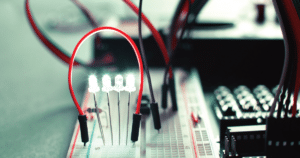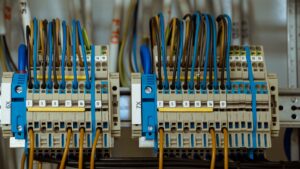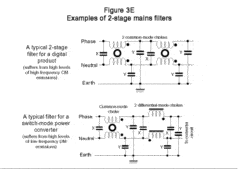Baseball Hall of Famer Yogi Berra was notable for his skill on the field and was equally notable for many of his quotes. “Yogi-isms” were things he often said that were both amusing and insightful. Referring to a popular restaurant, he said, “Nobody goes there anymore; it’s too crowded.” Sounds like a contradiction, but it’s easy to follow his meaning. Customers chose not to … [Read more...]
Using a TEM Cell for Radiated Emissions and Immunity Troubleshooting
Many companies would welcome a full EMC compliance test chamber if it weren’t for budget and real estate considerations. Yet, they would like the opportunity to develop a low-cost troubleshooting solution for assessing radiated emissions and radiated immunity prior to going off for formal compliance testing. While I’ve written many articles [References 1 to 8] on how to … [Read more...]
Advantages of Using a Pre-Certified Radio Frequency Module in an IoT Application
Learn the benefits of using a pre-certified radio frequency (RF) module in the design phase when building a new IoT application, and learn the implications in EMC and Radio certifications. The Internet of Things (IoT) is revolutionizing the quantity and manner in which we exchange and store information. Historically, people exchanged information through reading and … [Read more...]
Space Weather – Predicting EMC Effects of Solar Storms
When we think about weather, we know what it is. We feel it, worry about it, and talk about the heat, the moisture, the wind. Weather is dynamic, though mostly predictable because we can measure its conditions. We also know that the atmosphere involves large scale electrical activity. Cloud masses move above and below each other, generating enormous static-electricity … [Read more...]
5 Ways to Eliminate Ground Loops — Part 2
As we discussed in Part 1, Ground Loops, while often not obvious, can be a significant source of frustration for system operators and integrators. This phenomenon manifests as unwanted electrical noise – audible hums in speakers, jitter on screens, noisy measurements, and bad measurement data – and it can even lead to unexpected communications loss and equipment … [Read more...]
Demystifying the Math of EMC
As we progress through the fold of technological developments, be it in commercial products, military advancements, automotive electronics, or any of the other industries where electromagnetic devices are developed, EMI will be present and EMC testing will be required. For those technical personnel who are walking into a laboratory for the first time, learning EMC because … [Read more...]
Filter Installation Issues: Input and Output Conductors
Real-life filter performance is totally dependant on how they are installed, especially on the impedance of the RF Reference and the impedance of the method used to electrically bond the filter to its RF Reference. Not only should these impedances be much lower than that of the shunt capacitors in the filters, they should also allow the internal and external CM surface currents … [Read more...]
5 Ways to Eliminate Ground Loops — Part 1
A Brief Introduction Most workers already know that proper grounding is a fundamental safety precaution for all kinds of electrical equipment. However, it’s less well known that while grounding can prevent and resolve many safety and power issues, improper grounding can create problems in data logging, data acquisition, and measurement and control systems. One of the most … [Read more...]
Designing and Selecting Filters: Using Soft Ferrite Cores
All inductors (L) suffer from RF resonances, and are only effective in filters at frequencies not far above their first (parallel) resonance (see section 1.8.1 of [7]). But so-called ‘soft ferrites’ behave resistively at RF, and the resulting lack of RF resonances helps make filters that use them have better and more predictable performance at RF. For example, a typical small … [Read more...]
Designing and Selecting Filters: Maximizing Impedance Discontinuities
To design effective filters we must maximize impedance discontinuities, at the frequencies of concern for emissions and/or immunity. Capacitors are used in conjunction with the RF Reference Plane (see Figure 1) to create low impedances, applied in shunt, whilst resistors or inductors are used to create high impedances, applied in series. When the source and … [Read more...]
- 1
- 2
- 3
- …
- 24
- Next Page »













